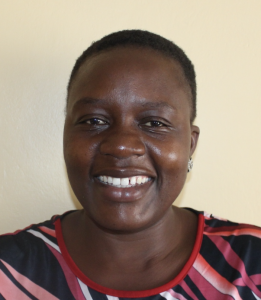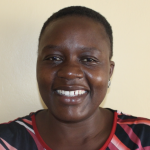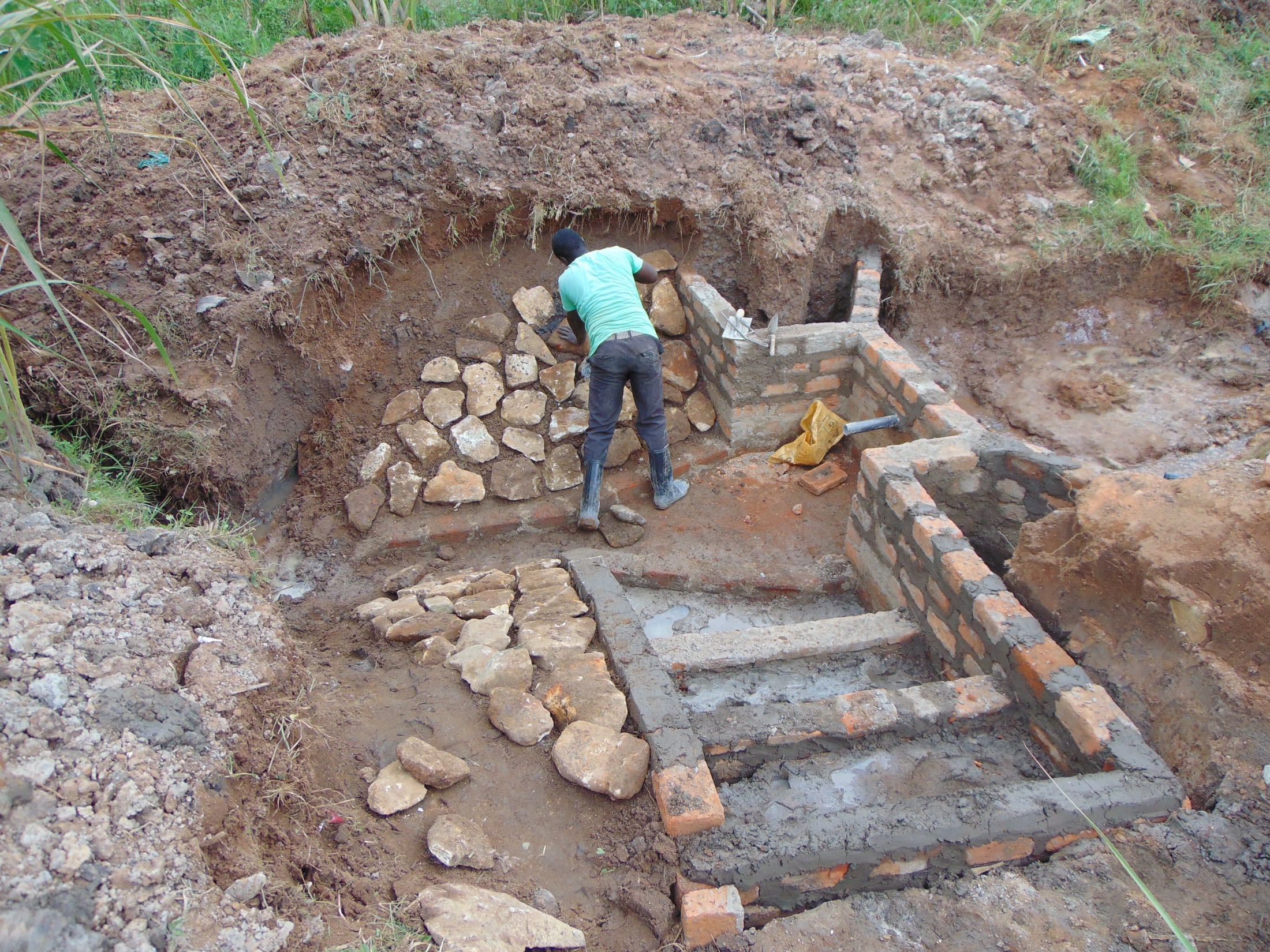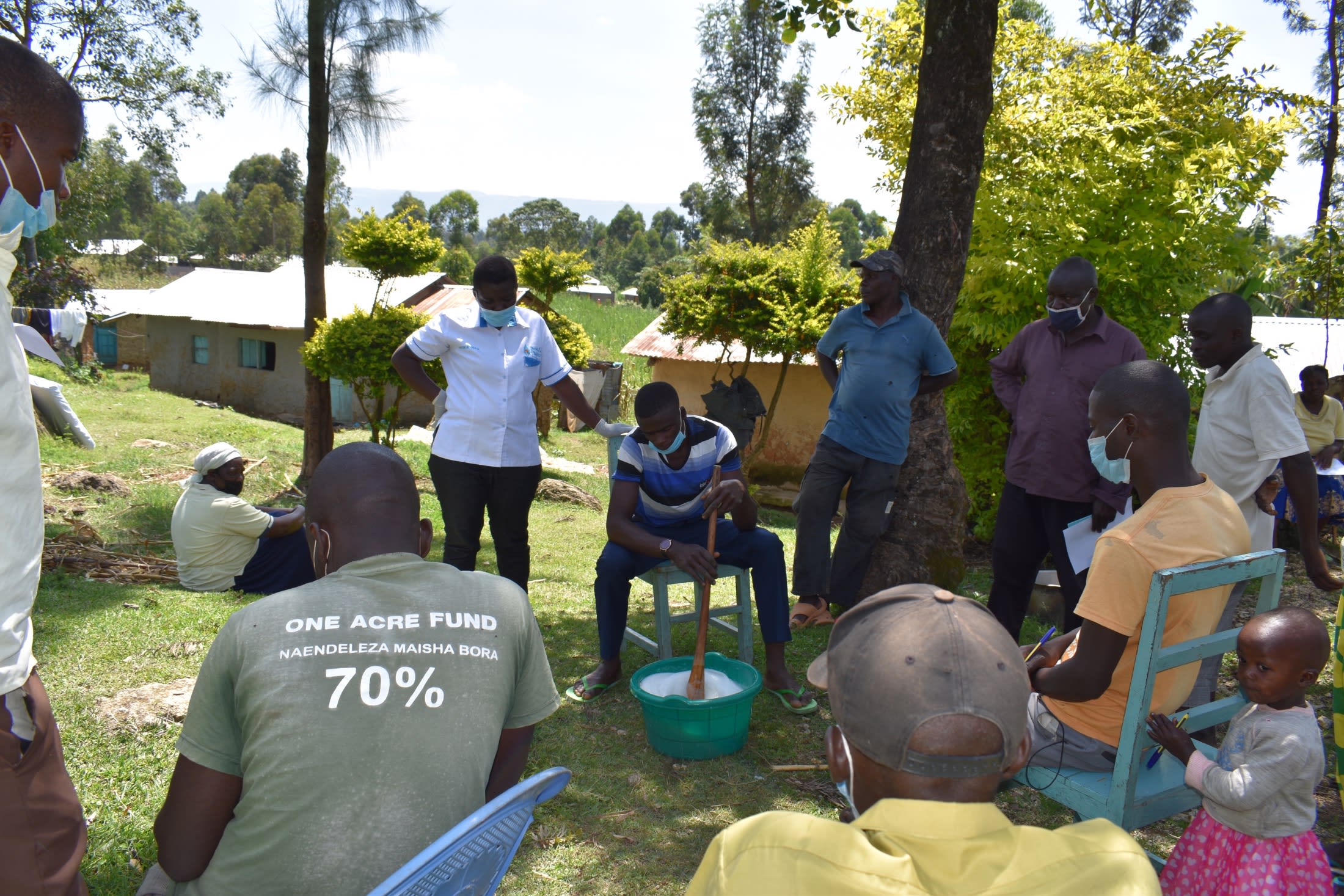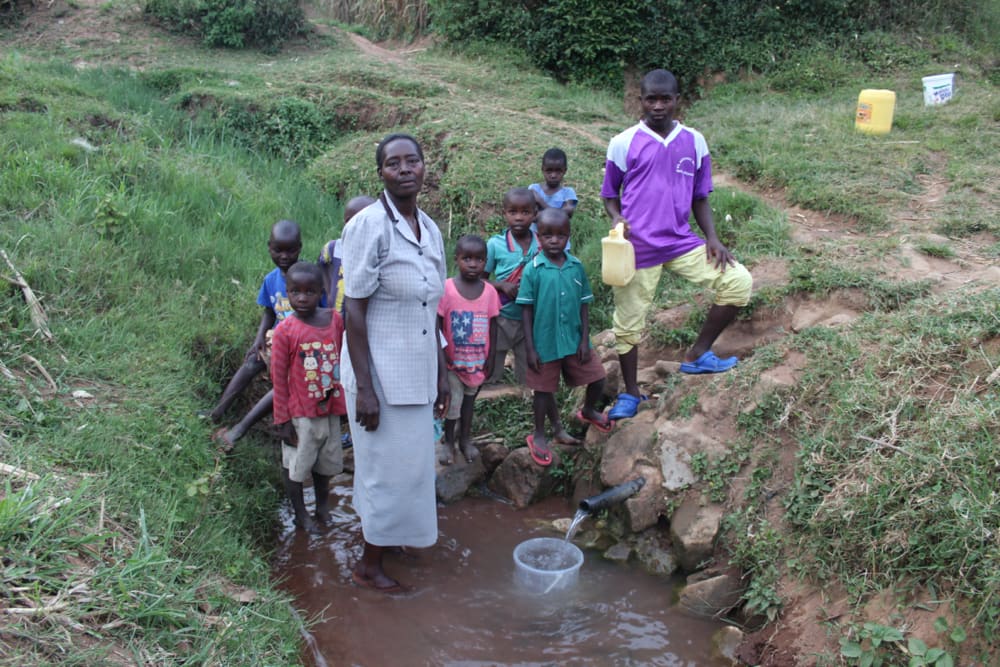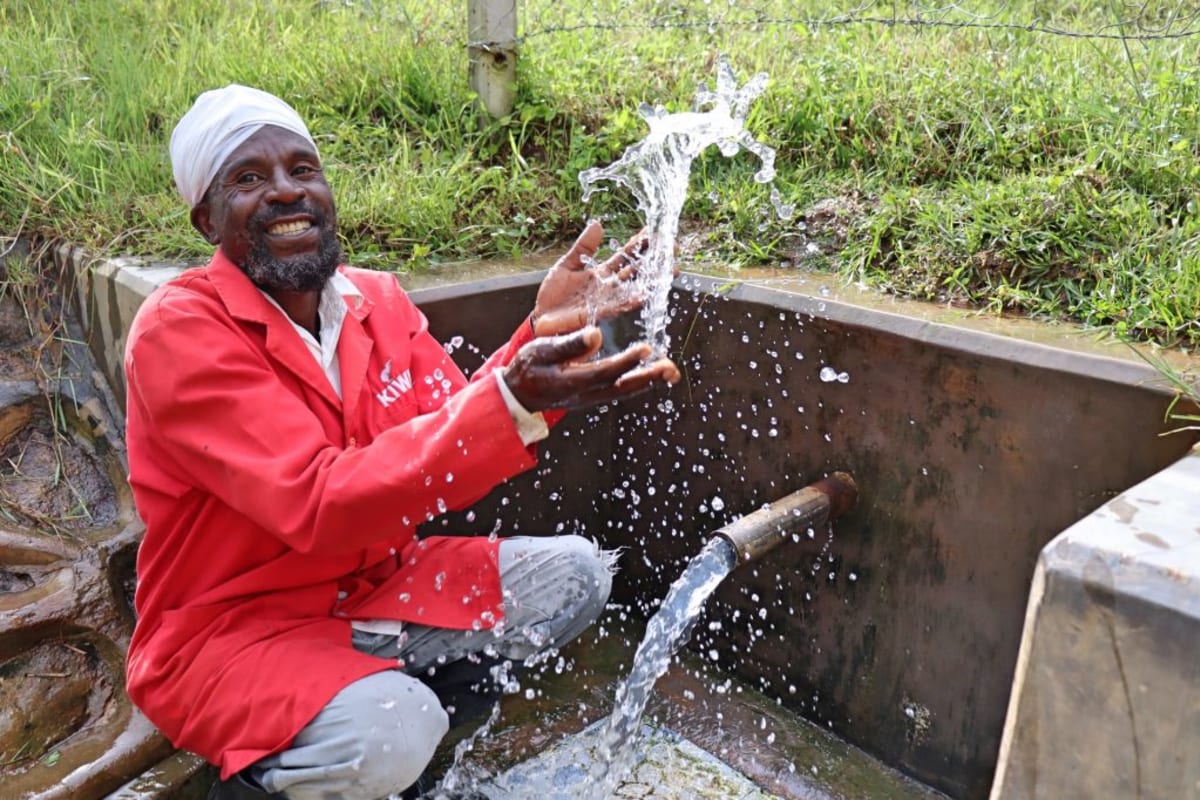Please note: original photos were taken before the COVID-19 pandemic.
Shianda Community neighbors a famous prayer mountain known as Ingolomosio. At the peak of this mountain is a prayer altar that was set aside to allow interdenominational Christian members within and without the county to gather and raise their voices to God. It is believed any prayer done on this mountain is normally answered. As I alighted at the shopping center, the motorcycle riders assumed we were going to the mountain to pray and came over immediately, hoping to get passengers. Unfortunately for them, we were heading to Aburil Spring in the village! But this was equally good news to them, and they gladly took us there.
Shianda is closely located to the Kambi ya Mwanza Shopping Center. Thus, as you alight at the shopping center, you see a lot of shops located on both sides along the busy Kakamega-Webuye Highway. After branching toward the community, you pass around 5 homesteads before reaching Aburil Spring. Their homes are both semi-permanent and permanent, with each home compound consisting of at least a main house, kitchen, dishrack, clothesline, and latrine. The homes are well kept with grass kept short and neat. As you go down to the spring you meet a rocky terrain on the farms and along the road.
Aburil Spring serves 315 people in this area. Apart from the household water users, the spring also serves the busy shops and hotel vendors along the shopping center. Thus, everyone comes early to get water - as early as 5:00 am before dawn to avoid congestion. The hotel vendors likewise need water very early to prepare tea for early risers. This causes crowding as early as 6:00 am every day.
Women in this community understand the fact that delaying to go and fetch water will result in delaying all the daily chores and productive time. And to the hoteliers, delaying to fetch water means losing customers - and consequently, income - due to delays in food preparations. Some community members, especially those who live close by to the spring, opt to come at night when they are sure no one else will be there. The spring's poor state is affecting everyone who depends on it for water.
The main problems with Aburil Spring are its difficult access area, limited discharge, and poor water quality.
"I have grown up in this community and to us, getting clean water is a challenge. We suffered accessing water until my father, Aburil, tried to locally protect the spring. This, however, did not solve our problems. We still have congestion at this spring. We appeal for your help," said teenager Joel.
The spring's landowner, Mr. Aburil, tried to improvise a discharge pipe for the water to flow through in an effort to assist his community in accessing the water through an improved yield. The pipe, however, has not entirely solved the yield issues at the spring because not all of the water was tapped underground to flow into the pipe. There is still quite a lot of seepage around the pipe.
The pipe was also fixed too low in the ground, making it difficult to fetch water easily. This has resulted in congestion and overcrowding at the spring, which is why people try to stagger their collection times into the night and pre-dawn hours.
Because Aburil Spring is located on a gradual slope, during the rainy season accessibility becomes a challenge as the land around the spring turns slick with mud. The access area has a large and constant pool of water surrounding it because there is no drainage system. People have to stand in several inches of water to reach the discharge pipe, exposing themselves to dangerous insects and worms that bite them while they fill their jerrycans. Mothers cannot send their youngest children to help fetch water for fear they will get stuck in the mud or trip and drown in the standing water.
The spring's water is also contaminated with farm chemicals, animal waste, and other toxins carried directly into the spring by surface runoff. Dogs and other animals will frequently drink directly from the source, polluting the water. Community members report constant cases of coughs, stomachaches, and bacteria infections, especially among their children under 5.
Some community members have installed small plastic rain tanks, pots, or storage drums outside their homes to supplement their water supply during the rainy season. But when there are no rains, they still depend on Aburil Spring. The wait time only increases during such dry seasons at the spring, as it is known for its reliability in all seasons.
"It's like a dream to us that our spring will be protected. Many [people said] they would protect the spring for us, but this had been a lie for such a long time. Now we are relieved that this will be a thing of the past," said 48-year-old farmer and mother Rael Kenyatta.
What We Can Do:
Spring Protection
Protecting the spring will help provide access to cleaner and safer water and reduce the time people have to spend to fetch it. Construction will keep surface runoff and other contaminants out of the water. With the community’s high involvement in the process, there should be a good sense of responsibility and ownership for the new clean water source.
Fetching water is a task predominantly carried out by women and young girls. Protecting the spring and offering training and support will, therefore, help empower the female members of the community by freeing up more of their time and energy to engage and invest in income-generating activities and their education.
Training on Health, Hygiene, COVID-19, and More
To hold trainings during the pandemic, we work closely with both community leaders and the local government to approve small groups to attend training. We ask community leaders to invite a select yet representative group of people to attend training who will then act as ambassadors to the rest of the community to share what they learn. We also communicate our expectations of physical distancing and wearing masks for all who choose to attend.
The training will focus on improved hygiene, health, and sanitation habits in this community. We will also have a dedicated session on COVID-19 symptoms, transmission routes, and prevention best practices.
With the community’s input, we will identify key leverage points where they can alter their practices at the personal, household, and community levels to affect change. This training will help to ensure participants have the knowledge they need about healthy practices and their importance to make the most of their water point as soon as the water is flowing.
Our team of facilitators will use a variety of methods to train community members. Some of these methods include participatory hygiene and sanitation transformation, asset-based community development, group discussions, handouts, and demonstrations at the spring.
One of the most important issues we plan to cover is the handling, storage, and treatment of water. Having a clean water source will be extremely helpful, but it is useless if water gets contaminated by the time it is consumed. We and the community strongly believe that all of these components will work together to improve living standards here, which will help to unlock the potential for these community members to live better, healthier lives.
We will then conduct a small series of follow-up trainings before transitioning to our regularly scheduled support visits throughout the year.
Training will result in the formation of a water user committee, elected by their peers, that will oversee the operations and maintenance of the spring. The committee will enforce proper behavior around the spring and delegate tasks that will help preserve the site, such as building a fence and digging proper drainage channels. The fence will keep out destructive animals and unwanted waste, and the drainage will keep the area’s mosquito population at a minimum.

 Protected Spring
Protected Spring
 Rehabilitation Project
Rehabilitation Project








